Stereotypically, cats are represented as sly, sexy, intelligent, manipulative and mysterious creatures, and all of these characteristics are embodied in Gone Girl’s (dir. David Fincher, 2014) complex anti-heroine Amy Dunne. In order to understand Amy’s immensely complicated character, who only exists in flashbacks during the film’s opening scene, the film projects Amy’s character onto her husband Nick’s un-named pet cat.
At the beginning of the film during the opening POV close-up shots, Amy’s visual allusions to a cat are noticeable, since Nick strokes his wife’s hair as if she was a pet.
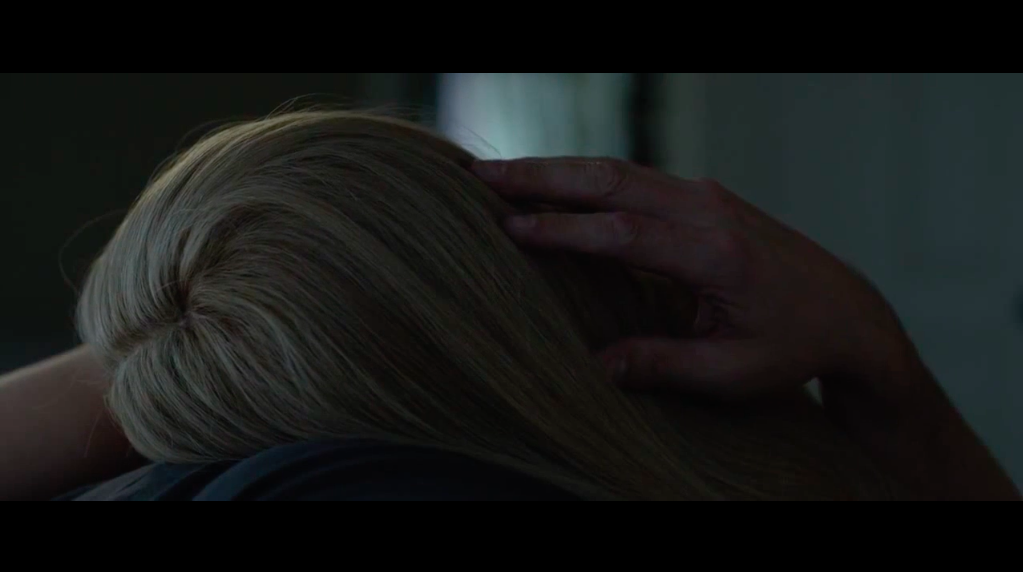
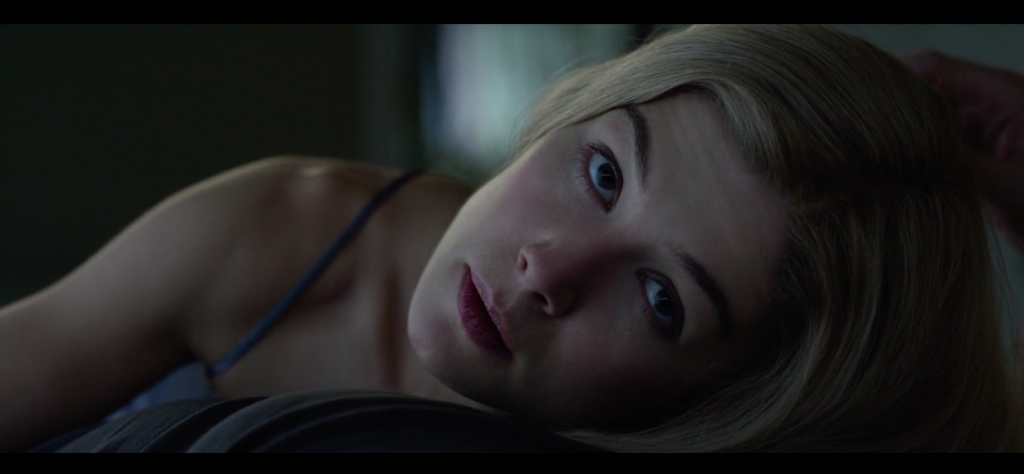
Her feline representation is confirmed when Amy suddenly and unexpectedly turns around and stares at Nick, recalling Anat Pick’s discussion of animals in film possessing the ‘blank gaze’.[1] Despite being human, Amy’s ‘blank stare’ (Pick, p. 171) does not exhibit ‘reciprocity and response’ (Pick, p. 172), but instead, like an animal’s, is an unsettling void of mystery. Debates concerning the film’s reputation as a feminist or misogynistic text are illuminated when her equation to the pet cat is considered. Although we sympathise with Amy when Nick’s infidelity and abuse towards his wife are revealed later on, her following psychopathic and revengeful acts of violence, including murder, undermine our initial compassion with Amy. From the outset, we are disturbed by Amy’s presence due to her depiction as a cold and mysterious character, which significantly matches the stereotypical associations of a cat, hence her cat-like femininity here. In addition to her possession of a ‘blank stare’ (Pick, p. 171), the low-key lighting and the chilling, enigmatic non-diegetic music reinforce her mysteriousness and subsequent associations with animality. This is confirmed when Nick’s thought-tracking voice-over struggles to “get answers” from his wife, asking “what are you thinking? How are you feeling?”.
The film’s use of the cat and the consequential misogynistic allusions are reinforced when Gillian Flynn’s original novel is considered. Unlike Flynn’s Amy, who remains present for the entirety of the novel, Fincher’s cinematic adaptation is devoted to Nick’s perspective. Therefore, when Amy fakes her disappearance in the following present-day footage, she is erased from the film for a considerable amount of time before Nick understands that Amy has framed him for murder. However, despite lacking physical existence in this scene, we are aware of Amy’s uncanny presence as a result of Nick’s cat’s presence during the scene. Her character’s projection onto this animal is evident through its eerie representation which is encouraged by its extended screen time, in addition to Nick’s treatment of the animal. When we are first introduced to the cat, Nick’s behaviours with the animal recalls Amy’s biased perceptions of their crumbling marriage.
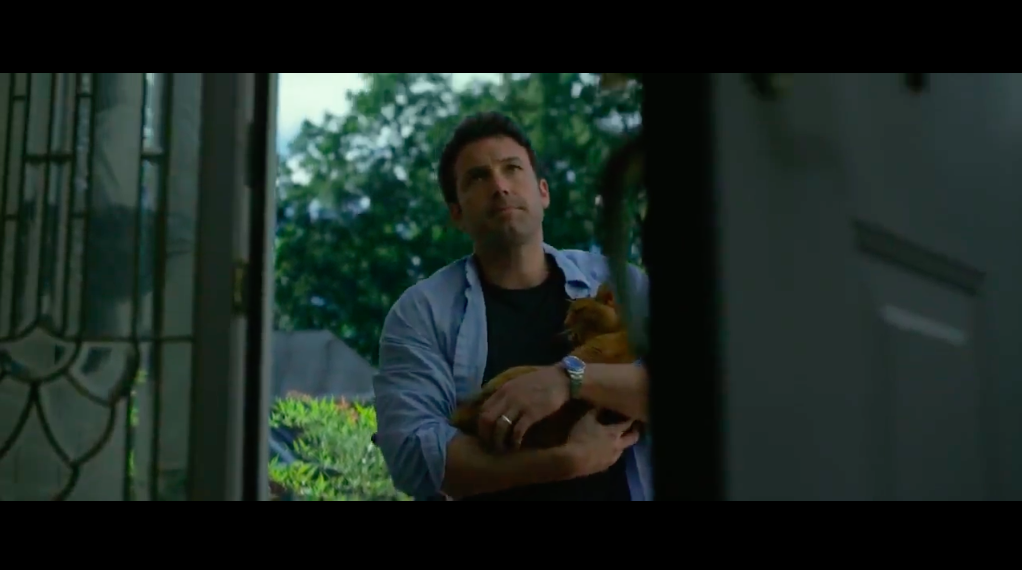
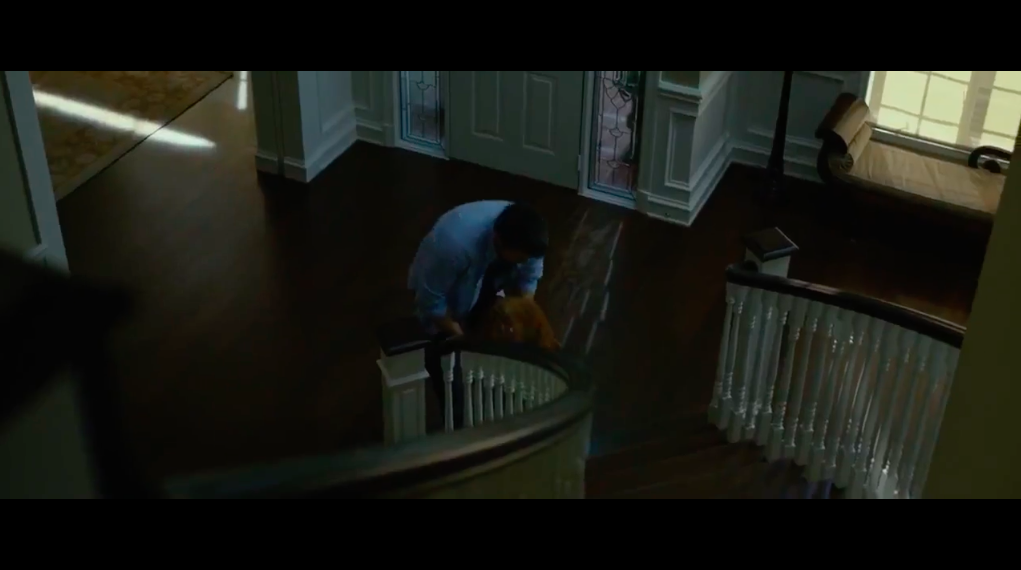
Like Nick’s brief adoration of his wife, Nick’s affections towards the cat do not last. Although he cradles it in his arms, Nick’s attempts to comfort the cat are merely temporary, as he disregards the cat, placing it on the nearby staircase.
Although the film is not explicit in Amy’s equation to the cat, the animal’s substitution for her character is implied in the many eerie drawn-out close proximity shots it appears in, which usually function to communicate a character’s thoughts and feelings. As if the animal was a human character, the camera cuts to a lengthy medium shot that therefore functions as both the cat’s and Amy’s reaction following Nick’s abandonment of them.
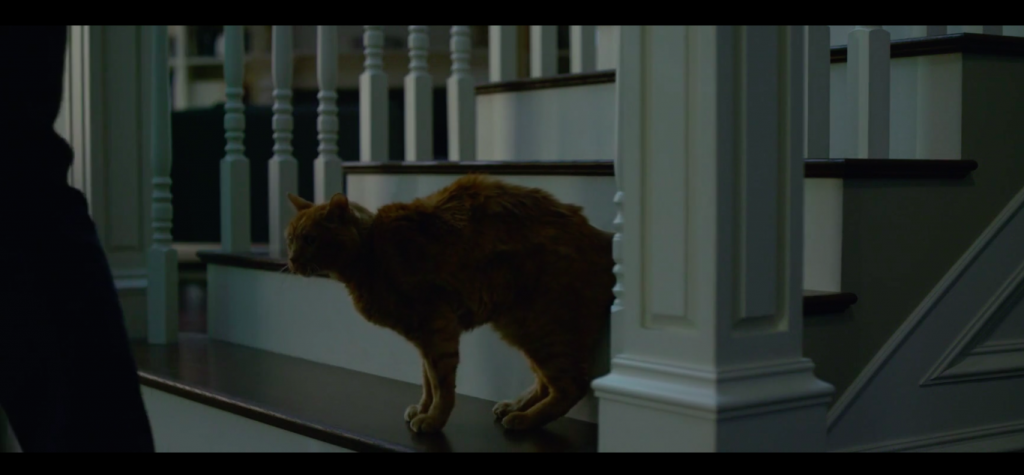
The cat’s spine is arched in an irritated manner, which portrays both the cat’s and Amy’s annoyance, having been rejected by their significant other. The animal’s mirroring of Amy’s character is also evident in the low-key lighting, which creates a mysterious atmosphere that the pair represent. Furthermore, the staircase posts that exist in the mise-en- scène establish a subtle visual allusion to prison bars, highlighting the sense of entrapment that Amy and the cat experience. Like the domestic house-cat who is only seen in the family home and is consequently trapped within the domestic spaces, Amy is also trapped in the abusive cyclical nature of her marriage with Nick.
The cat’s visible matted fur continues to remind us of the physical abuse that Amy is a victim of, and the camera’s positioning at the bottom of the stairs confirms this visual allusion.
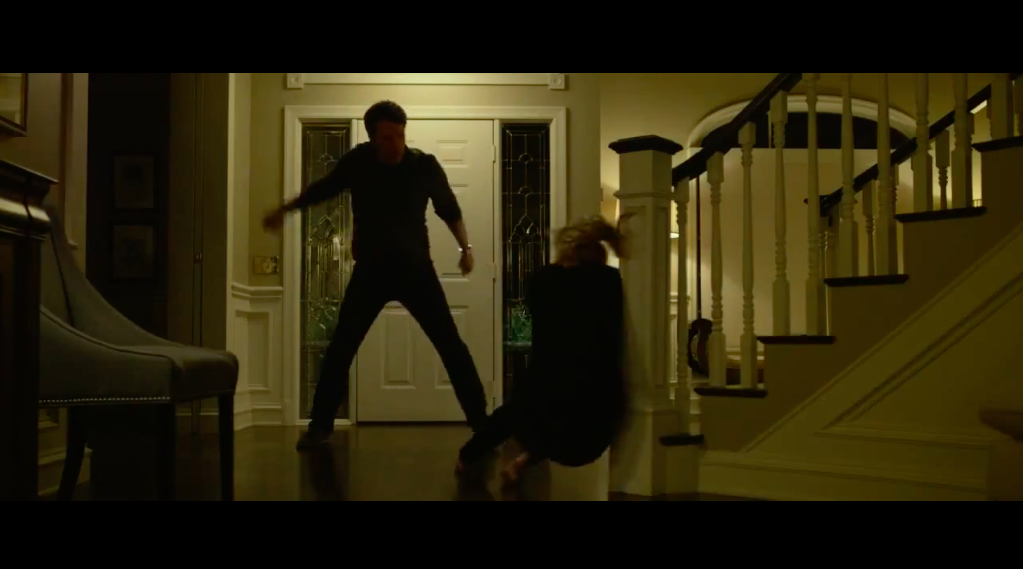
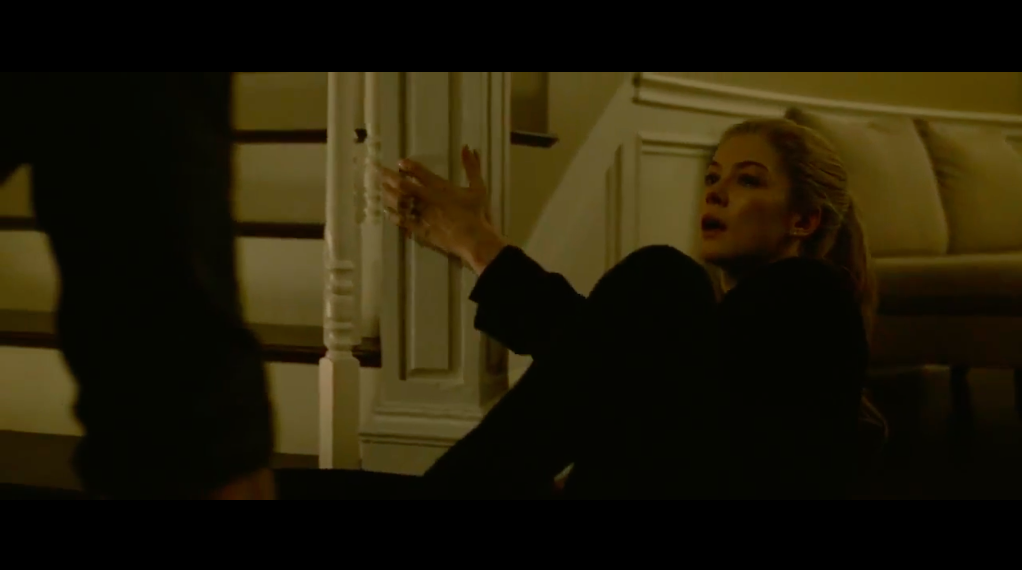
At a later point when Nick hits Amy during an argument, she falls into the staircase, consequently hitting her head on the bannister. Therefore, during the opening scene, Fincher establishes the cat’s visual and spatial alignment with Amy, which clarifies her character’s projection onto the animal, consequently explaining why, despite her disappearance, we feel her uncanny presence throughout the scene.
[1] Anat Pick, ‘Werner Herzog’s Creaturely Poetics’, in Creaturely Poetics: Animality and Vulnerability in Literature and Film (New York: Columbia University Press, 2011) pp. 151-183 (p. 171-2).